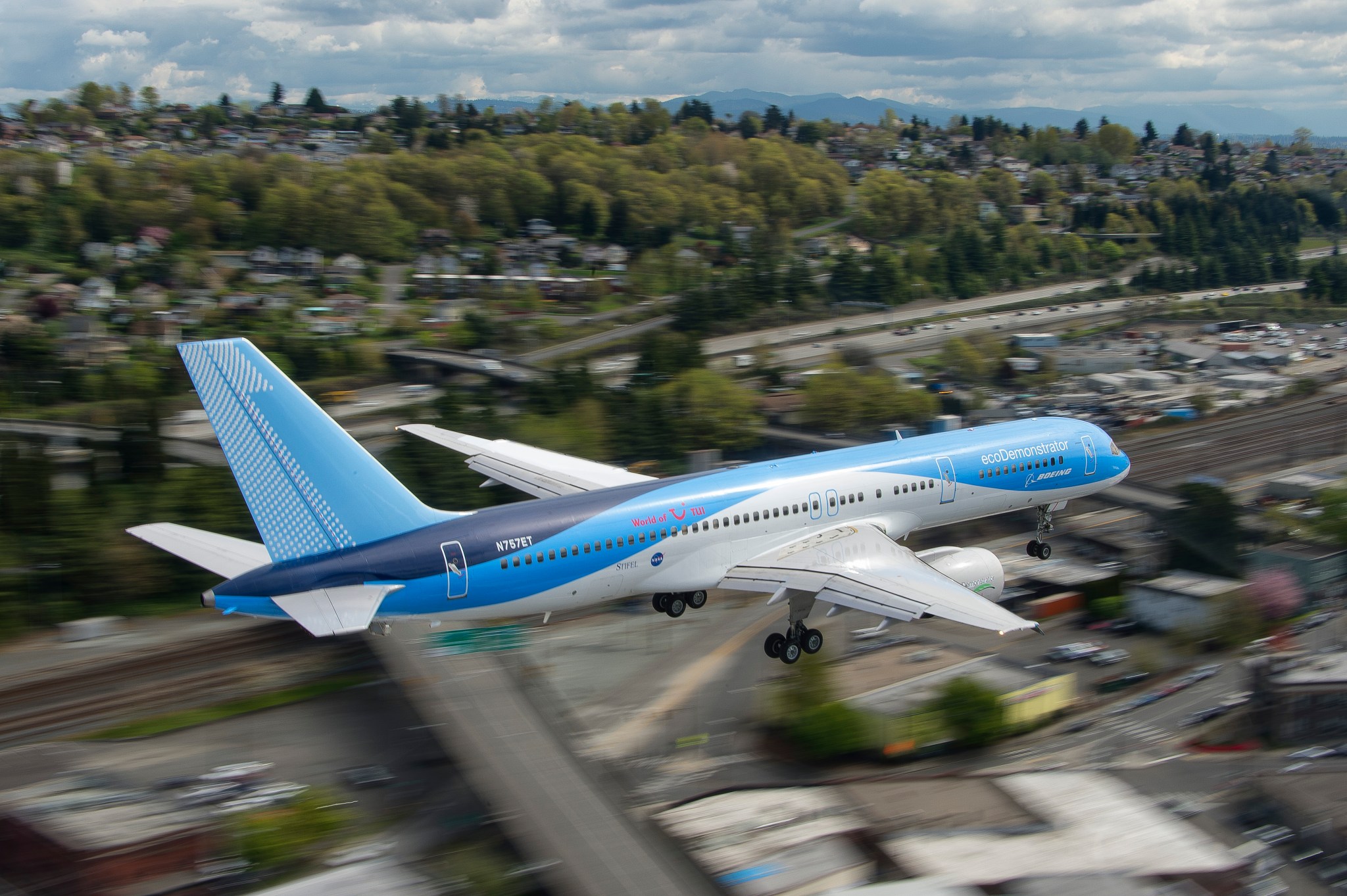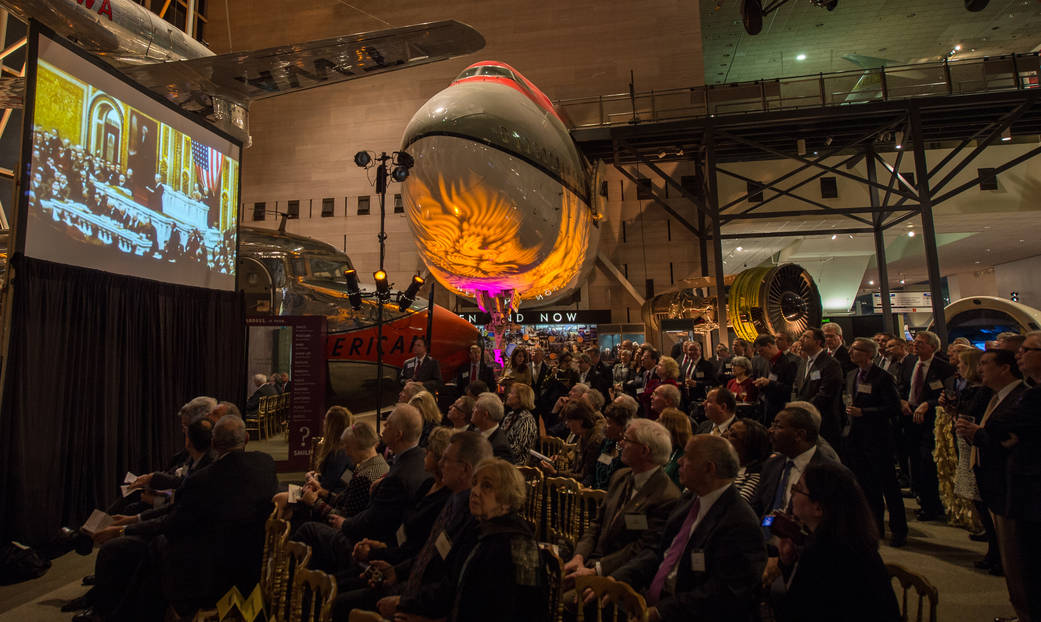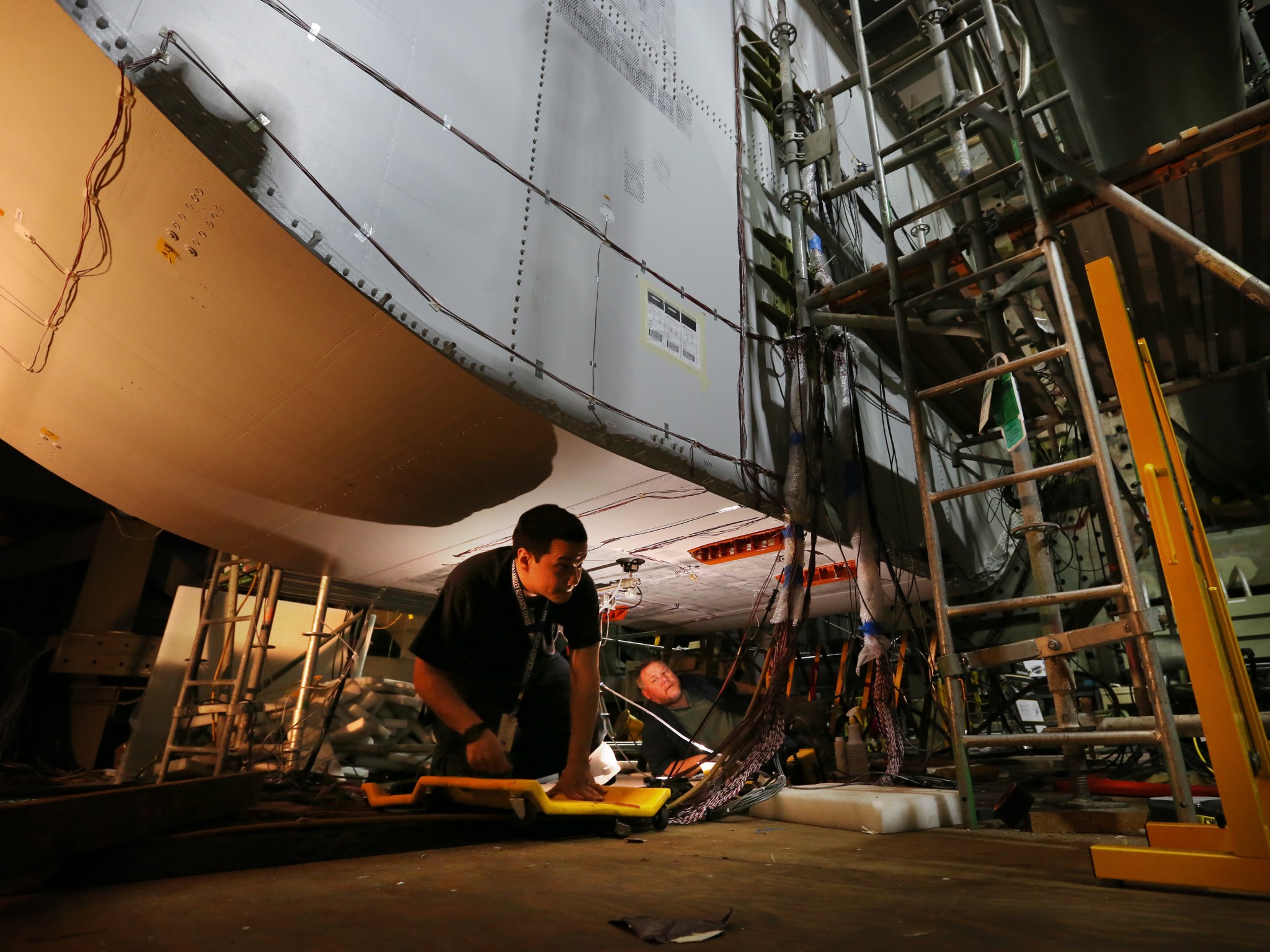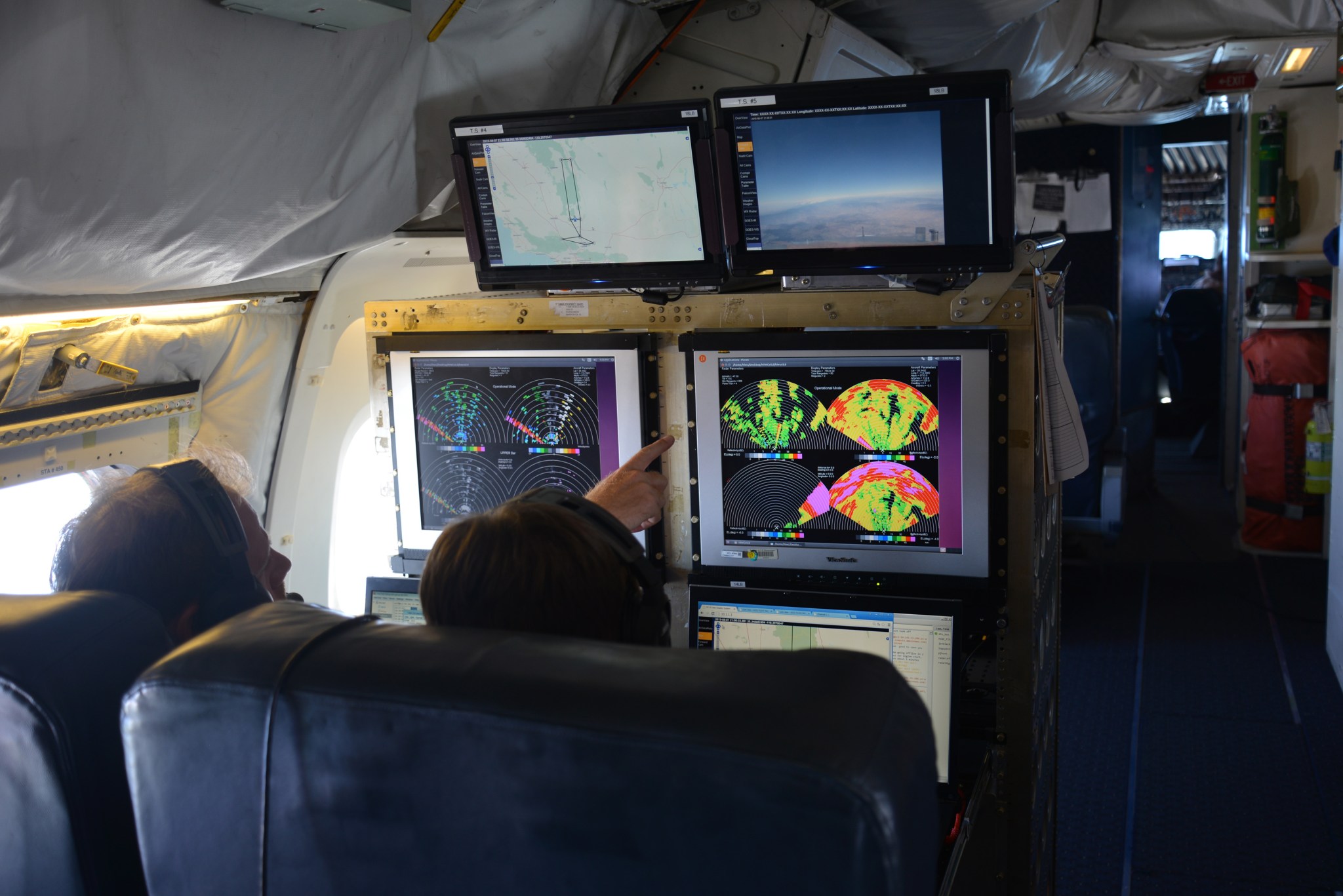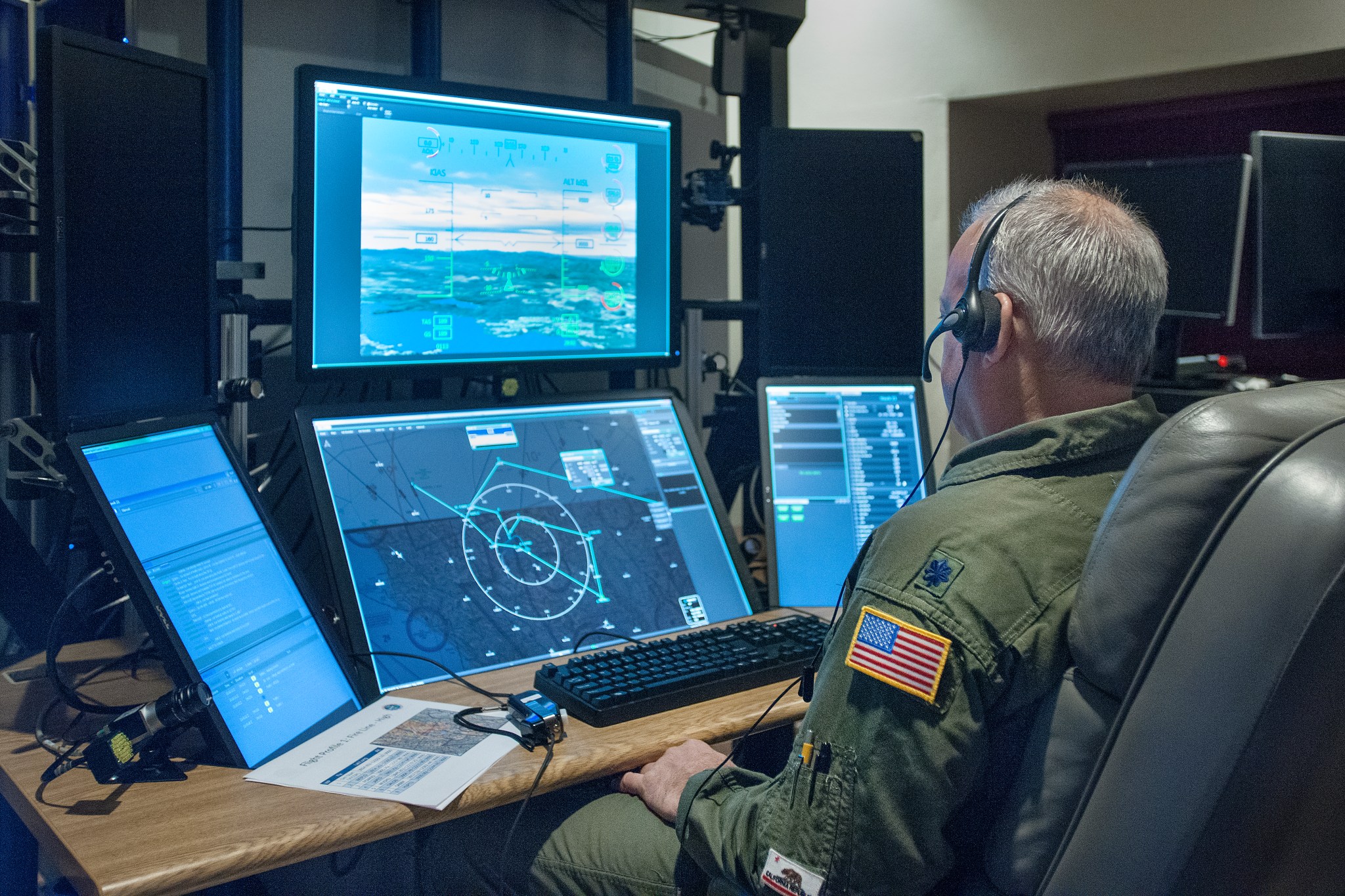NASA’s aeronautical innovators celebrated a century of research heritage during 2015, honoring that tradition every day they came to work by focusing on solving the biggest challenges facing the future of aviation.
Those challenges include making air travel more fuel efficient, less harmful to the environment and much quieter, all the while enabling the skies to safely handle unprecedented growth in global air traffic that will increasingly include unmanned aircraft systems.
Within NASA, this work – which takes place at laboratories, workshops and wind tunnels throughout the nation, often in partnership with other federal agencies, industry and academia – is managed in Washington, D.C. by the Aeronautics Research Mission Directorate, or ARMD.
Here is a sampling of just some of the research and activities tied to ARMD that took place during the past year:
A Century of Innovation
We’re standing on the shoulders of giants. The National Advisory Committee on Aeronautics, the NACA, was founded on March 3, 1915. Work by NACA engineers led to fundamental advances in aeronautics that enabled victory in World War II, spawned the world’s leading civil aviation manufacturing industry, propelled supersonic flight, supported national security during the Cold War, and laid the foundation for modern air travel and the space age when the NACA became NASA in 1958.
End of an ERA
NASA’s Environmentally Responsible Aviation (ERA) project concluded its final year after successfully completing eight Integrated Technology Demonstrations with the goal of making it possible for industry to build advanced, ultra-efficient commercial vehicles. Two of these demonstrations took place during 2015 aboard Boeing’s ecoDemonstrator 757 flying laboratory. The first studied whether small jets embedded in an aircraft’s vertical tail to blow air over its surfaces could provide enough force to safely allow smaller tails on future aircraft designs. The second studied how good a job some special coatings did to prevent sticky bug residue from building up on the leading edge of an airplane wing, which increases drag.
Another ERA technology demonstration that wrapped up during 2015 involved a concept called PRSEUS, short for “Pultruded Rod Stitched Efficient Unitized Structure.” PRSEUS is a NASA-developed process that stitches together lightweight composite, or non-metallic, materials to create damage-tolerant structures that could be used in uniquely shaped future aircraft. A test section 30 feet long, eight feet wide and 14 feet high was put through a torture test and passed with flying colors.
Considering Wild Ideas
Imagine an electrically-propelled airliner whose fuselage is the battery. How about an Unmanned Aerial Vehicle equipped with artificial intelligence programmed to respond to unforeseen situations the same way a human pilot would? Those are among the six concepts recently selected for study during the next two years or so as part of an imaginative venture begun in 2015 under ARMD’s new Convergent Aeronautics Solutions project. The hope is that these creative ideas will help crack tomorrow’s biggest challenges in aviation related to fuel use, the environment, and managing global growth in air traffic.
Overcoming Hazards at Altitude
Working with industry partners and other agencies – some from other nations – NASA during 2015 examined a pair of potential hazards in the air looking for ways to better detect them and reduce their effects. In one example, NASA’s DC-8 completed flights in Florida aimed at collecting data on high-altitude ice crystals for the High Ice Water Content mission. The campaign collected almost 72 hours of in-flight meteorological and radar data that could be used in future systems to alert pilots of conditions that could affect engine performance. In another, the final test of a three-phase Vehicle Integrated Propulsion Research project involved ingesting volcanic ash into an engine during a ground test, successfully testing an engine health monitoring system that could improve engine performance in the presence of that type of natural pollution.
A Future for Alternative Fuels
NASA’s long standing commitment to explore the use of alternative fuels in aviation and determine not only their effects on engine operation but on the environment as well continued during 2015. The process took an important step during the year when ARMD shared results from its second round of Alternative Fuel Effects on Contrails and Cruise Emissions research flights, which involved flying NASA’s DC-8 as a trio of international research aircraft trailed behind. Later in 2015, NASA collaborated with the German Aerospace Center (DLR), by supplying several key instruments for the DLR’s Emissions and Climate Impacts of Alternative Aviation Fuels experiments. Under this activity, NASA instruments were placed about 100 feet (30 meters) behind a parked DLR Airbus 320 to measure jet exhaust as it burned eight different types of standard and alternative fuels.
Planning for Drones
Preparing every aspect of the National Airspace System to accommodate Unmanned Aircraft Systems (UAS), commonly called “drones,” saw increasing activity in 2015 as public interest also grew. In collaboration with the Federal Aviation Administration, NASA successfully demonstrated a prototype Detect-and-Avoid system using NASA’s remotely piloted Ikhana aircraft, which made 11 flights over the California high desert involving more than 200 scripted encounters with approaching aircraft. Depending on the specific scenario, either Ikhana detected one or more approaching aircraft and sent an alert to its remote pilot to take action, or Ikhana itself took action on its own by flying a programmed maneuver to avoid a collision – an aviation first. In June, ARMD co-hosted a three-day UAS Traffic Management (UTM) convention where representatives from government and academia, as well as the aviation, agriculture, film and other industries, shared ideas for ways to safely use small drones at low altitudes. In late 2015, NASA completed the first of several demonstrations of technologies that could be part of a traffic management system for small drones used for rural operations such as agriculture, firefighting and infrastructure monitoring.
Mighty Morphing Flying Machines
In April, NASA researchers completed initial flight testing of a radically new morphing wing technology that has the potential to save millions of dollars annually in fuel costs, reduce drag and airframe weight, and decrease noise during takeoff and landing. A total of 23 research flights were flown with experimental Adaptive Compliant Trailing Edge (ACTE) flight control surfaces that offer significant improvements over conventional flaps. NASA teamed with the Air Force Research Laboratory to equip a Gulfstream III jet with ACTE flaps designed and built by FlexSys, Inc., of Ann Arbor, Michigan. The test team exceeded expectations by completing all primary and secondary objectives on schedule and within budget.






























